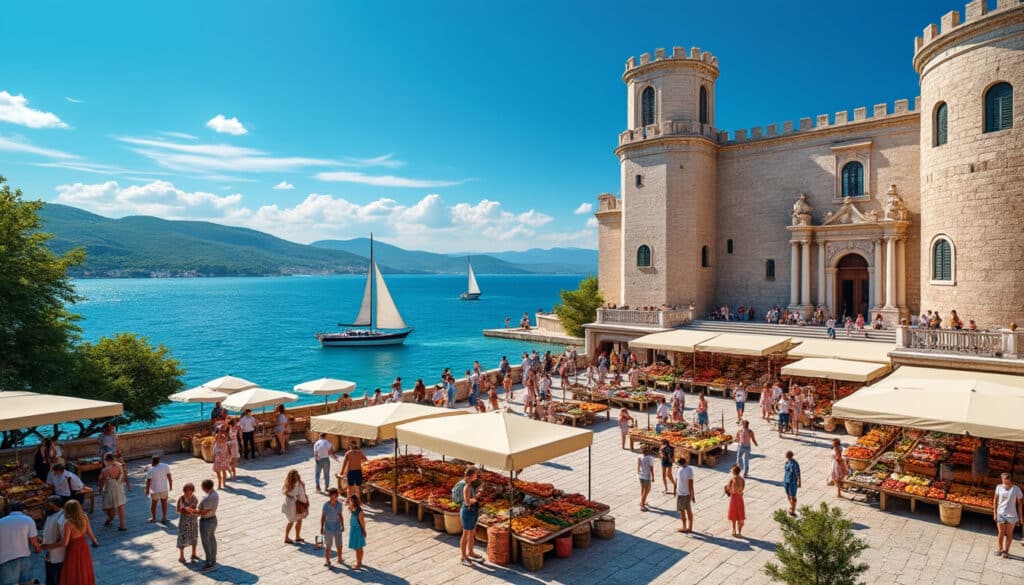Split, the vibrant city located on Croatia’s stunning Adriatic coastline, offers a unique blend of rich history, diverse demographics, and fascinating geography. As one of the key urban centers in Dalmatia, Split serves not only as a cultural and economic hub, but also as a gateway to the country’s past and its dynamic present. This article explores the demographics and geography of Split, painting a detailed picture of what makes this city so captivating to residents and visitors alike. From the population growth that echoes its historical evolution to the geographical features shaping its landscapes, Split stands as a testament to the region’s resilience and charm.
Historical Demographics of Split: A Voyage Through Time
The demographic journey of Split is a captivating story of growth and change, reflecting broader historical currents in the region. From a modest population of just over 12,000 in 1857, Split’s population swelled to over 160,000 in the early 21st century. This growth isn’t merely a numerical increase; it’s a narrative of waves of migration, socio-economic transformations, and urban development.
Let’s delve into some key elements that illustrate these shifts:
- 🚶♀️ Early Growth: In the late 19th and early 20th centuries, Split experienced significant growth due to industrialization and urbanization. The city expanded its infrastructure and became an important port, drawing more residents.
- 🏗️ Post-War Boom: The post-World War II era saw accelerated growth, driven by the reconstruction efforts and economic expansion across Yugoslavia. This period saw Split’s population jump from about 40,000 in 1931 to over 85,000 by 1961.
- 📈 Ferocious 1970s Expansion: The 1970s were particularly notable for explosive growth, with the population climbing past 129,000. This was a time of intense urban development where new neighborhoods were built to accommodate the influx of people.
- 📊 Modern Adjustments: Like many European cities, Split faced population stabilizations and slight declines as birth rates fell and urban migration patterns shifted in the 1990s and early 2000s. By 2025, the population has stabilized around 158,000 residents within city limits.
The current demographic composition of Split reveals a dominant Croatian ethnic presence, making up a significant 96.23% of the population. This cultural homogeneity is paralleled by the religious alignment, where a significant 86.15% identify as Roman Catholics. Such demographics offer a mosaic of tradition and continuity, mirroring the city’s ancient past and preserved cultural identity.
| Year | Population | Growth Rate (%) |
|---|---|---|
| 1857 | 12,417 | — |
| 1931 | 40,029 | 37.3% |
| 1971 | 129,203 | 51.3% |
| 2001 | 188,694 | -5.9% |
| 2025 | 158,943 | Stabilized |
These demographic trends offer valuable insights into the socio-economic forces that have shaped Split, positioning it as a pivotal city in Croatia. Not only do the figures reflect historical events, but they also highlight how Split has navigated the tides of change over centuries.
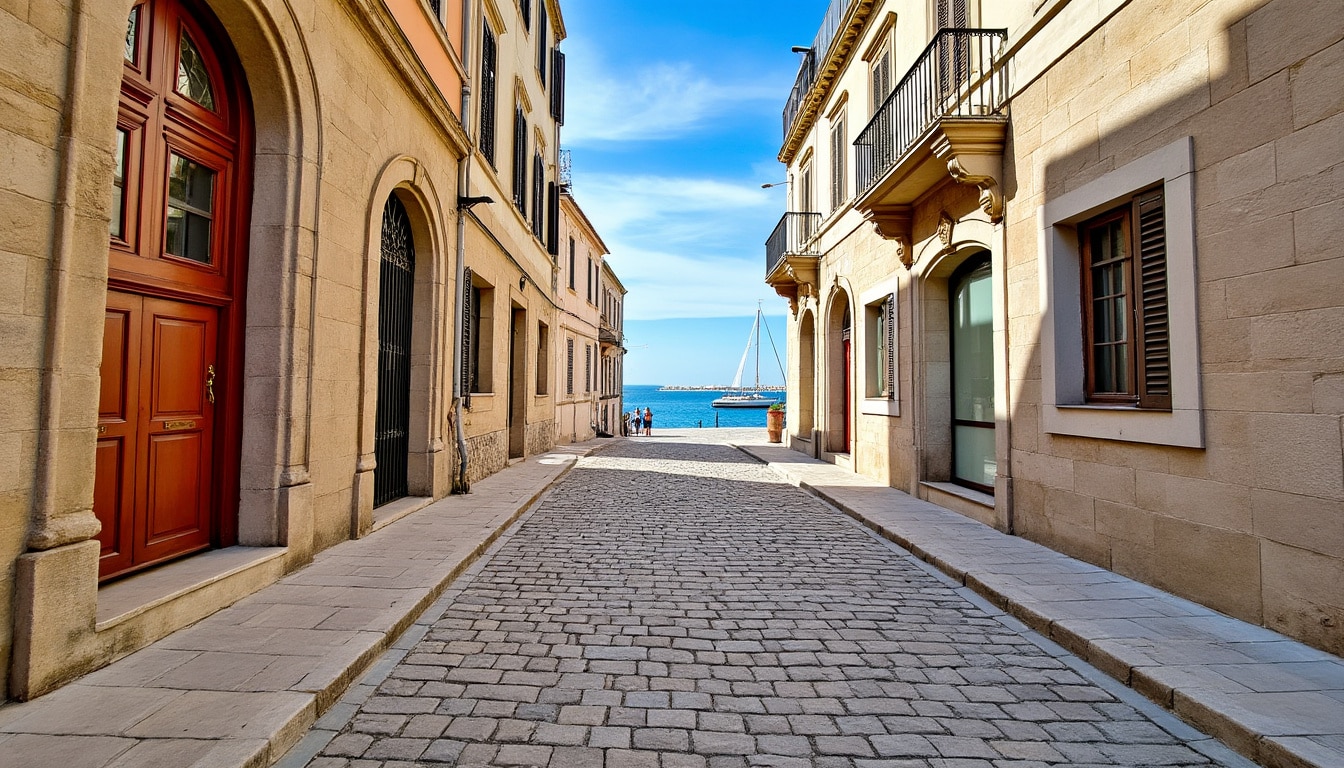
Geographical Marvels: The Natural Canvas of Split
Sitting proudly on a peninsula between the Gulf of Kaštela and the Split Channel, the city of Split is blessed with geographical wonders that accentuate its allure. The backdrop of rugged mountains and the expanse of the Adriatic Sea renders Split a picturesque haven, attracting countless geographers, tourists, and artists alike.
The geographical makeup of Split not only enhances its scenic beauty but also plays a critical role in its cultural and economic development. Here’s an exploration of its key geographical features:
The Coastal Charm
Split’s coastline offers a breathtaking landscape marked by its azure waters and pristine beaches. The city’s coastal position has historically made it a bustling port, facilitating trade and cultural exchange, and continues to be a major draw for tourism and Adriatic Coastline Tours.
With its strategic maritime location, Split stands as a vital node in the Adriatic shipping routes, allowing seamless connectivity with other European and Mediterranean ports.
Mountainous Majesty
The backdrop of the Dinaric Alps adds a dramatic flair to Split’s landscape. Marjan Hill, a focal point for local leisure and Split Adventures, offers panoramic vistas of the city and sea, making it a beloved recreational space for both locals and visitors. This mountainous terrain also influences the local climate, bringing cooler breezes that temper the Mediterranean sun.
In addition to leisure, these mountains have historically served as natural fortifications and provided a bounty of materials for building the city’s iconic structures.
The Urban And Natural Fusion
The interplay between urban development and natural geography is evident in Split. The city harmoniously integrates historical and modern architecture with its natural surroundings, preserving Dalmatian Homes and ancient Roman remnants while embracing contemporary design.
This fusion is exemplified in places such as the Diocletian’s Palace, a UNESCO World Heritage site, and the Riva, a bustling promenade that invites both daytime leisure and vibrant nightlife.
The geographical diversity of Split contributes to its unique cultural landscape, making it a prime destination for those seeking both historical exploration and natural beauty. It’s a place where heritage meets modernity, underpinned by its stunning geographical setting.
Modern Demographics: The Pulse of Today’s Split
The current demographic landscape of Split offers a snapshot of contemporary urban dynamics within a historically rich city. As of 2025, the city boasts a resident population of approximately 158,943, with the wider metropolitan area encompassing a diverse urban expanse.
This section explores how modern demographics reflect changing social dynamics that are pivotal in shaping Split’s current identity:
- 👪 Diverse Settlements: Beyond the city core, Split’s metropolitan area includes numerous settlements like Solin, Kaštela, and Trogir, contributing to a total of 349,314 residents.
- 🏙️ Urbanization: With an urban-centric lifestyle, Split has undergone substantial development in sectors such as tech, tourism, and cultural enterprises, leading to an increase in infrastructure and job opportunities.
- 🔢 Demographic Composition: While predominantly Croatian, the city has witnessed a subtle diversification in recent years with an influx of professionals and students from various parts of the globe, reflecting wider European trends.
The urban area of Split serves as a microcosm of this demographic diversity, demonstrating broader socio-economic transformations experienced throughout Europe. Urban development continues to accommodate this shift, providing state-of-the-art facilities while preserving historical legacies.
The cultural fabric of Split remains vibrant, supported by various initiatives promoting Heritage Croatia and recognizing the value of its tangible and intangible heritage. Festivals, exhibitions, and tours like Split Cultural Tours are common, celebrating the city’s rich history and fostering community engagement.
Modern demographics have also influenced lifestyle changes within the city. Increasing emphasis on cultural and leisure activities is apparent, with thriving music, arts, and sports scenes. From traditional Dalmatian Cuisine offerings to modern culinary delights, the city’s gastronomic profile evolves alongside its population.
The Economic Landscape: Interplay Between Geography and Demographics
Split’s economic prowess is rooted deeply in its geographical and demographic foundations. As of 2025, the city continues to serve as an economic beacon in the Dalmatian region, capitalizing on its strategic location, skilled workforce, and diverse industries.
Several key aspects demonstrate the economic dynamics at play:
- ⚓ Maritime Industries: With its extensive coastline, Split houses bustling harbors and Split Marina Services, essential for both commercial and leisure maritime activities.
- 🏨 Tourism Surge: The picturesque geography, coupled with its extensive Historical Sites Croatia, propels tourism growth, a cornerstone of the city’s economy. Splendid beaches, cultural monuments, and lively streets ensure a steady influx of global visitors seeking unique experiences.
- 🏠 Real Estate Development: With the expansion of urban areas, there’s a significant demand for residential and commercial properties. New developments aim to blend modern architecture with traditional Dalmatian Homes.
The interplay between geography and demographics fosters an adaptable economic landscape. As education and skills levels rise, there’s a notable shift towards industries that require innovation and technological expertise. This shift is evident in the rise of tech start-ups and research institutions within the city.
Moreover, local initiatives strive to support heritage and cultural maintenance, recognized as crucial economic assets. Artisan markets and locally sourced products, like Local Artisan Souvenirs, thrive, appealing to both residents and visitors eager to experience authenticity.
These economic attributes not only underline Split’s current vibrancy but also chart a future path of growth and sustainability. The synergy between demographics and geography creates unique opportunities for SMEs and larger enterprises, ensuring Split remains at the forefront of economic vitality in Croatia.
Heritage and Culture: The Demographic Influence
The demographic fabric of Split intricately intertwines with its rich cultural heritage, creating a living testament to the past and a thriving contemporary culture. Cultural preservation efforts are mirrored in the city’s demographics, where traditional influences blend seamlessly with modernity.
Split’s demographic diversity manifests in various cultural expressions and community initiatives, which include:
- 🎭 Cultural Festivals: Annual events and cultural tours play a significant role in celebrating the city’s heritage. From music festivals to art exhibitions, these portray Dalmatian and broader Croatian influences.
- 🕌 Architectural Heritage: The iconic Diocletian’s Palace, alongside other historical monuments, exemplifies the city’s architectural grandeur. The preservation and presentation of these sites help boost cultural tourism.
- 🧵 Traditional Craftsmanship: Local crafts, such as lace-making and woodcarving, thrive in Split, with artisans preserving age-old techniques passed down through generations. These crafts form an essential part of Split’s identity and offer economic opportunities through local markets.
Demographically, the city’s younger population demonstrates an increased interest in cultural heritage, spurring initiatives that encourage heritage conservation and cultural engagements. This synergy promotes dynamic intergenerational collaborations, ensuring that Split’s rich heritage remains alive and relevant.
Moreover, Dalmatian Cuisine reflects the demographic influences, offering traditional dishes alongside modern interpretations. Local markets brim with fresh produce and authentic delicacies, drawing both locals and tourists eager to savor Croatian culinary heritage.
The cultural vitality of Split is constantly evolving, sustained by its demographic shifts. With a vibrant mix of tradition and innovation, Split remains a cultural hub that continues to attract and inspire artists, historians, and enthusiasts worldwide.
FAQ about Split’s Demographics and Geography
- What is the current population of Split in 2025?
The population of Split in 2025 is approximately 158,943, with the wider metropolitan area comprising over 349,314 residents.
- How has Split’s geography influenced its economy?
Split’s coastal geography has been pivotal in shaping its economy, providing essential maritime industries and supporting thriving tourism focused on its stunning natural and historical sites.
- Why is the cultural heritage of Split significant?
Split’s cultural heritage is vital in preserving historical legacies and promoting tourism. Its rich blend of tradition and modernity fosters a thriving cultural scene that attracts global attention.

Fun Facts & Curiosities About Split
Split, Croatia, is a vibrant coastal city offering an enchanting blend of history, culture, and natural beauty. With its ancient roots, Split captivates visitors with its Roman-era Diocletian’s Palace, stunning Adriatic views, and rich cultural tapestry. This bustling city aligns…

Architecture and urban features of Split
The city of Split is renowned for its architectural diversity, which seamlessly combines elements from the Roman era to the modern day. This fusion is not just a testament to the city’s rich history but also to its ability to…
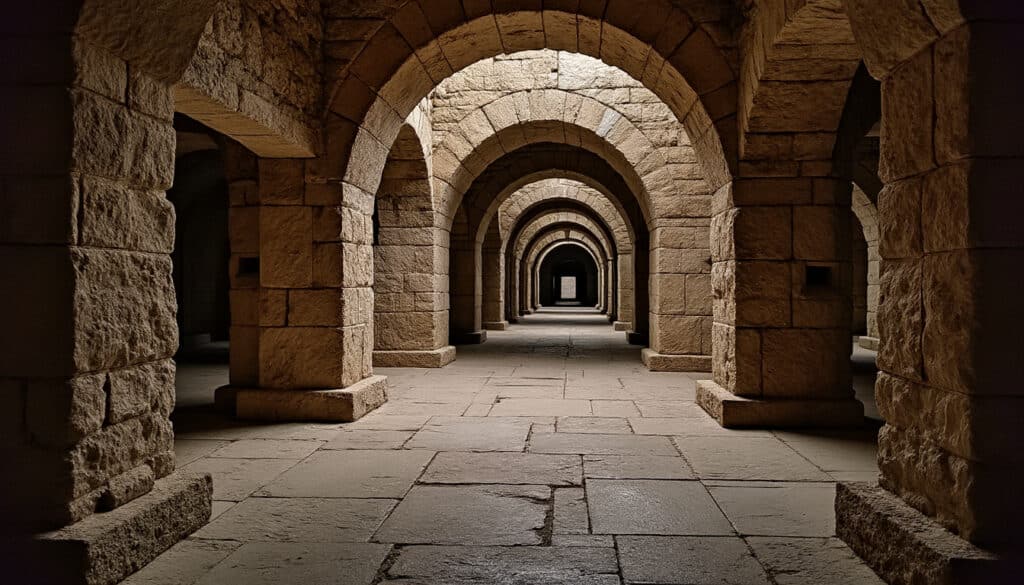
Split, Croatia, is a city that effortlessly weaves together rich history, stunning landscapes, and a vibrant lifestyle. Nestled on the Adriatic coastline, Split offers a dynamic blend of ancient charm and modern comfort, making it a remarkable place to experience…

Split, the enchanting Croatian city on the Adriatic coast, has a rich and riveting history that dates back centuries. From its early days as the Greek colony of Aspálathos to becoming a significant Roman settlement, and through the Byzantine, Venetian,…
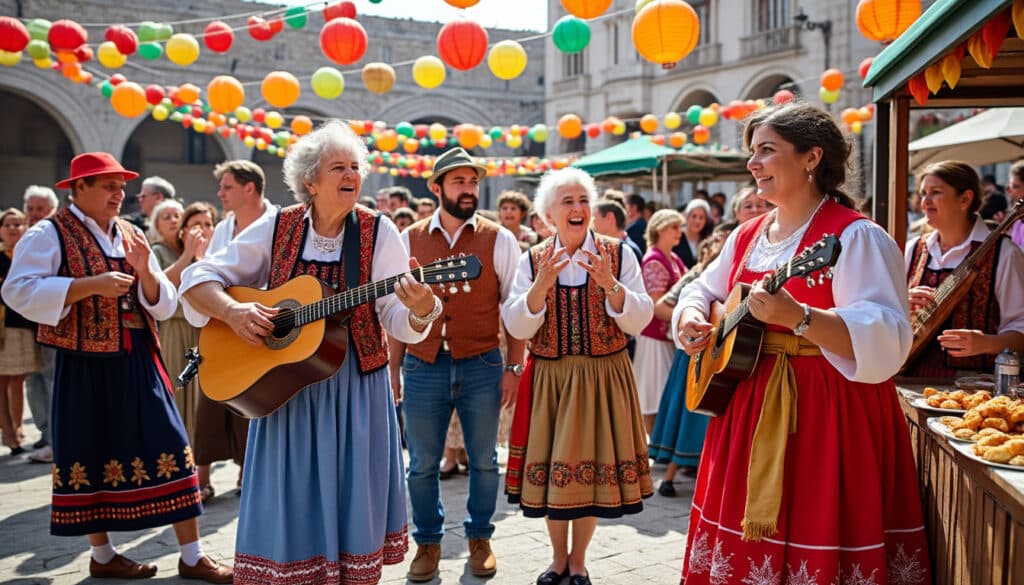
Holidays and celebrations in Split
Split, a vibrant coastal city in Croatia, is renowned for its rich tapestry of cultural celebrations and festive events. Visitors are drawn to the unique blend of historical significance and modern vibrancy that the city’s festivities offer. From elegant theatre…

Language and spelling of Split
Amidst the stunning coastline of Croatia lies the city of Split, a place rich in history and culture. Split’s linguistic tapestry is vibrant, reflecting influences from past empires and modern-day tourism. This article delves into the complexities and beauty of…
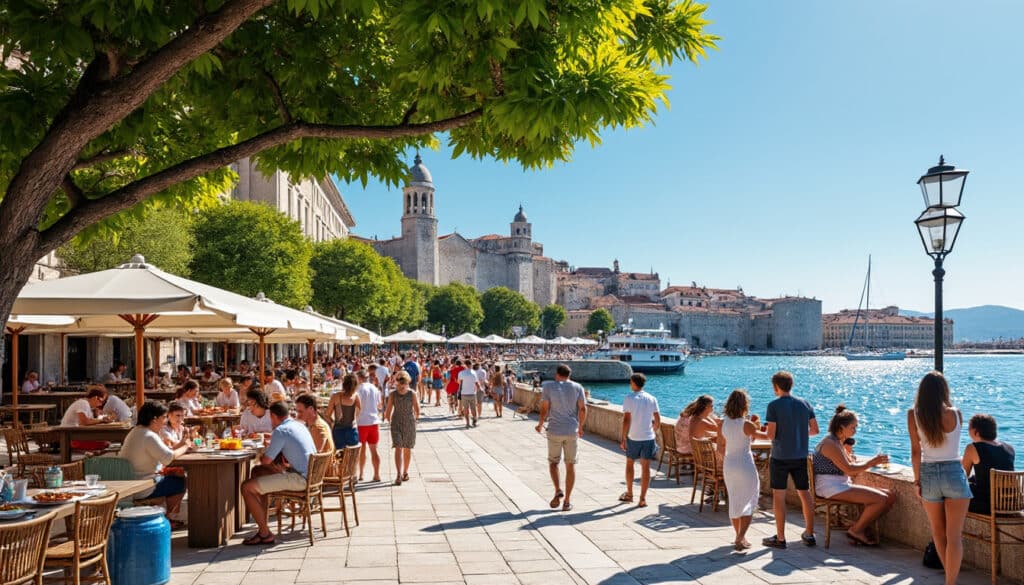
Local tips for tourists in Split
As the sun kisses the Adriatic coast, Split emerges as a vibrant jewel of culture and history. Nestled along the Dalmatian Coast, this enchanting city offers a tapestry of ancient ruins, azure waters, and culinary delights. Embracing both its Roman…

Names, flags, and identity of Split
Welcome to a deep dive into the fascinating world of Split, a city in Croatia beautifully defined by the intertwining of its rich history and evolving identity. In this exploration, we will uncover the stories behind the names, the vibrant…
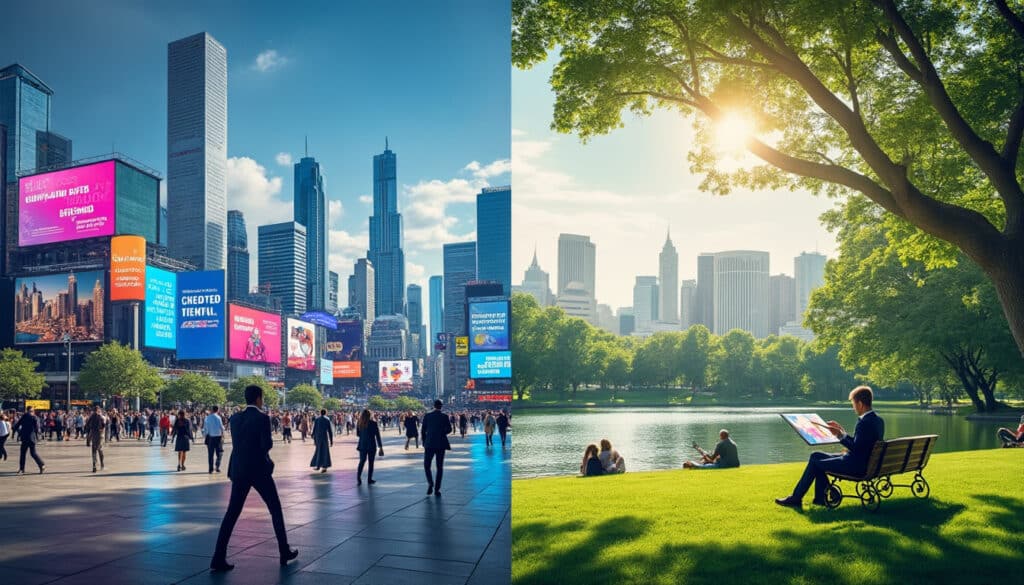
Reputation and identity of Split
Split, a coastal gem in Croatia, is renowned for its ancient charm and vibrant modern life. This city, a blend of rich history and contemporary culture, draws visitors for its stunning natural beauty and the diverse experiences it offers. Known…
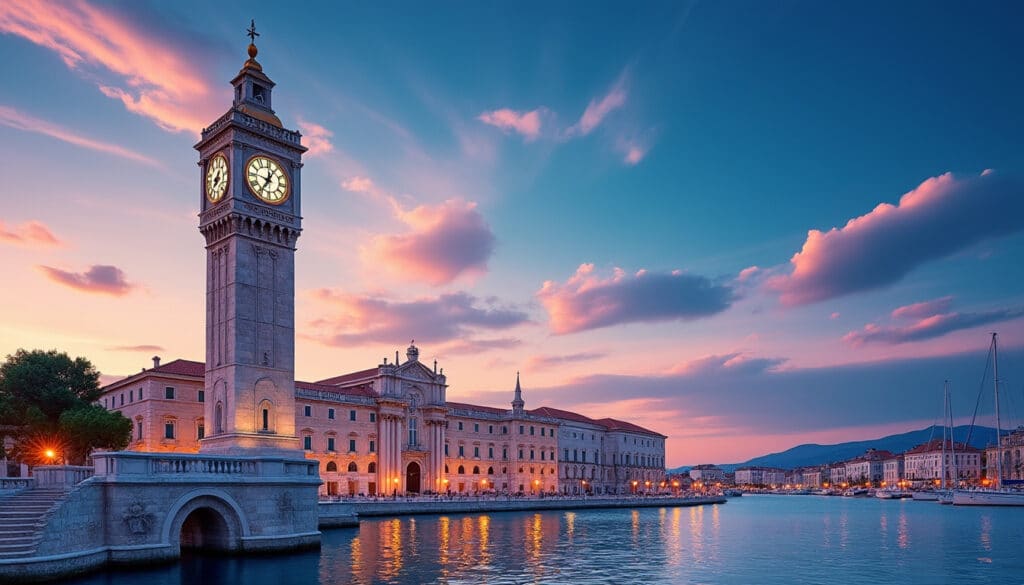
Split, Croatia, a picturesque coastal city known for its stunning views of the Adriatic Sea and timeless Roman architecture, is also a fascinating point of interest when it comes to time zones. Often caught between the vibrant tempos of tourist…
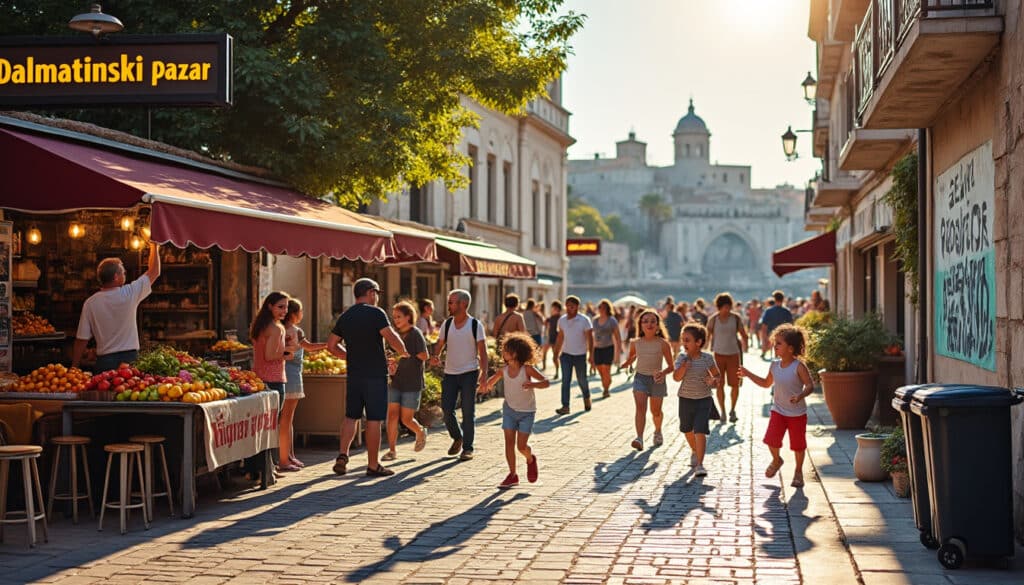
Unusual facts and social issues in Split
Located on the stunning Dalmatian Coast, Split, Croatia is a place that mesmerizes with its rich historical tapestry and thriving cultural scene. This unique city has evolved over the centuries while preserving its fascinating essence. Discover a plethora of unusual…

What does Split look, smell, feel like?
Rich in history and brimming with scenic beauty, the coastal city of Split in Croatia invites travelers to explore its multifaceted charm. From its breathtaking landscapes to its vibrant cultural tapestry, Split offers a sensory experience that captivates the soul.…


